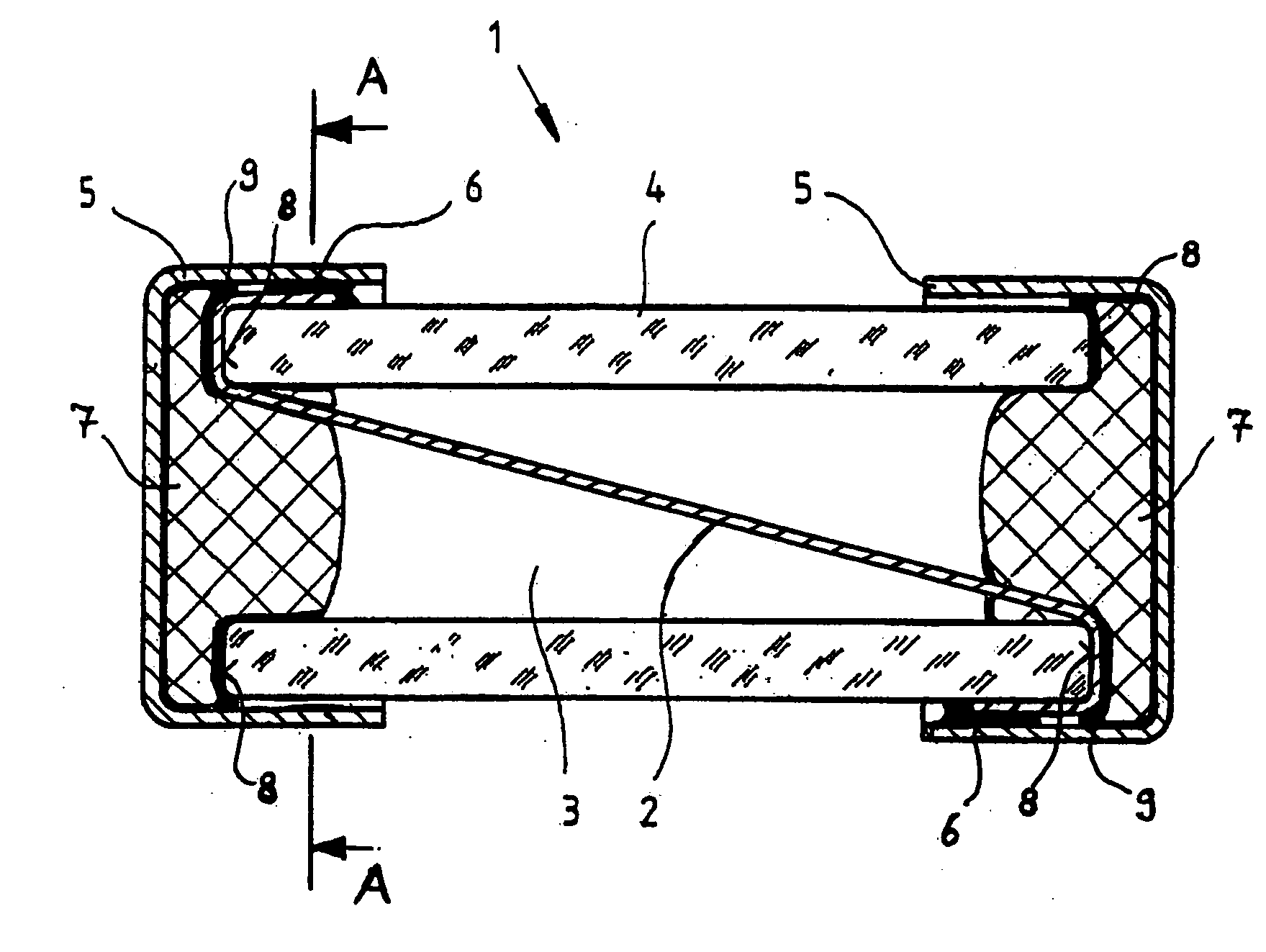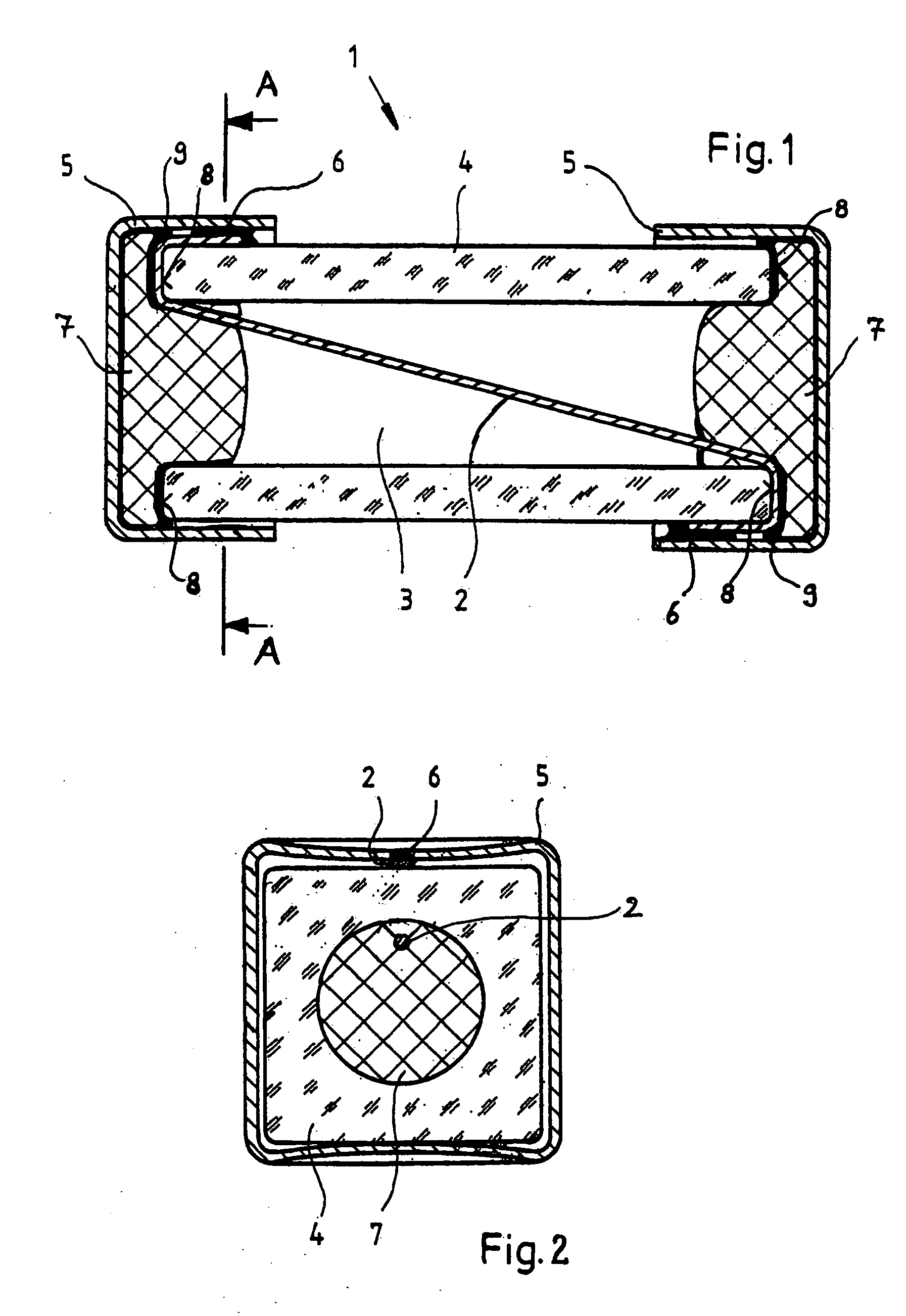Tubular fuse component with end caps with a hermetically sealing plastic sealing body insert
a tube fuse and end cap technology, applied in the direction of basic electric elements, electric devices, emergency protective devices, etc., can solve the problems of unfavorable use, unfavorable use, and step increase in the cavity of the fuse component,
- Summary
- Abstract
- Description
- Claims
- Application Information
AI Technical Summary
Benefits of technology
Problems solved by technology
Method used
Image
Examples
Embodiment Construction
)
[0015] In the schematic longitudinal sectional view of FIG. 1, a fuse component 1 is illustrated, which has a fusible conductor 2, which extends diagonally in an internal cavity 3 of a cylindrical tube 4. In the embodiment and also in all other embodiments of the invention, the fusible conductor 2 can be not only a wire with any desired cross sectional profile but also a fusible conductive wire wound about an insulating core. The tube 4 has a cylindrical shape, which can have any desired cross sectional profile. The cavity 3 is, for instance, of circular cylindrical shape. The tube 4 is manufactured from an electrically insulating material, for instance of glass, ceramic material or plastic material. In the illustrated exemplary embodiment, the fusible conductor 2 extends diagonally through the cavity 3. In other embodiments, other arrangements of the fusible conductor 2 in the cavity 3 are possible. The fusible conductor 2 is preferably passed around the end surfaces 8 of the tube...
PUM
 Login to View More
Login to View More Abstract
Description
Claims
Application Information
 Login to View More
Login to View More - R&D
- Intellectual Property
- Life Sciences
- Materials
- Tech Scout
- Unparalleled Data Quality
- Higher Quality Content
- 60% Fewer Hallucinations
Browse by: Latest US Patents, China's latest patents, Technical Efficacy Thesaurus, Application Domain, Technology Topic, Popular Technical Reports.
© 2025 PatSnap. All rights reserved.Legal|Privacy policy|Modern Slavery Act Transparency Statement|Sitemap|About US| Contact US: help@patsnap.com


